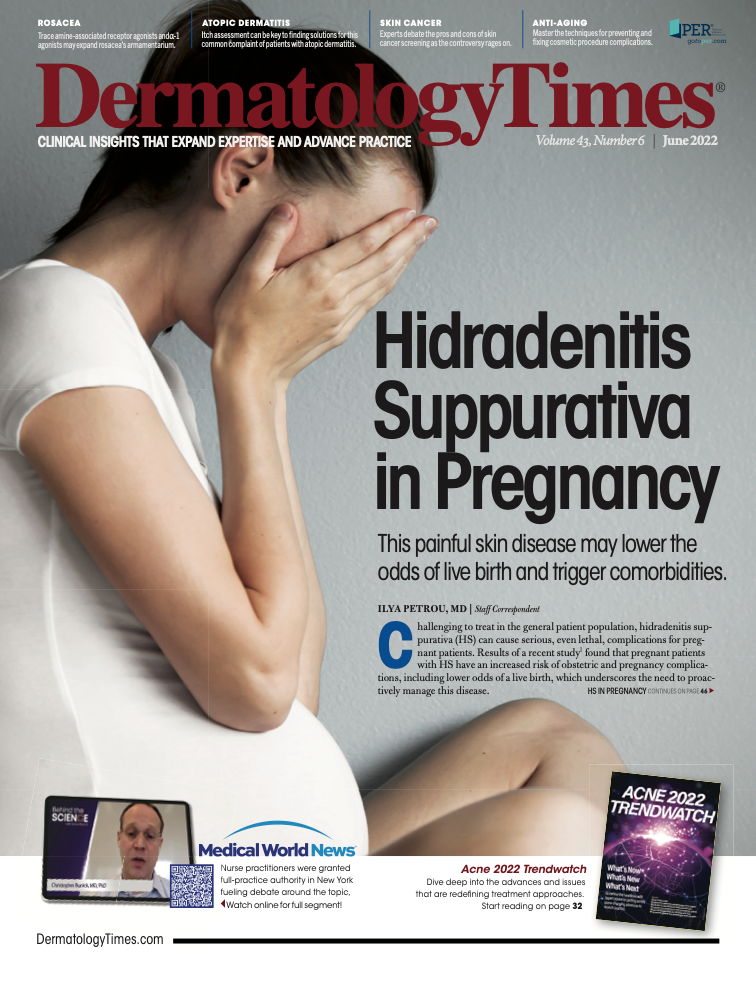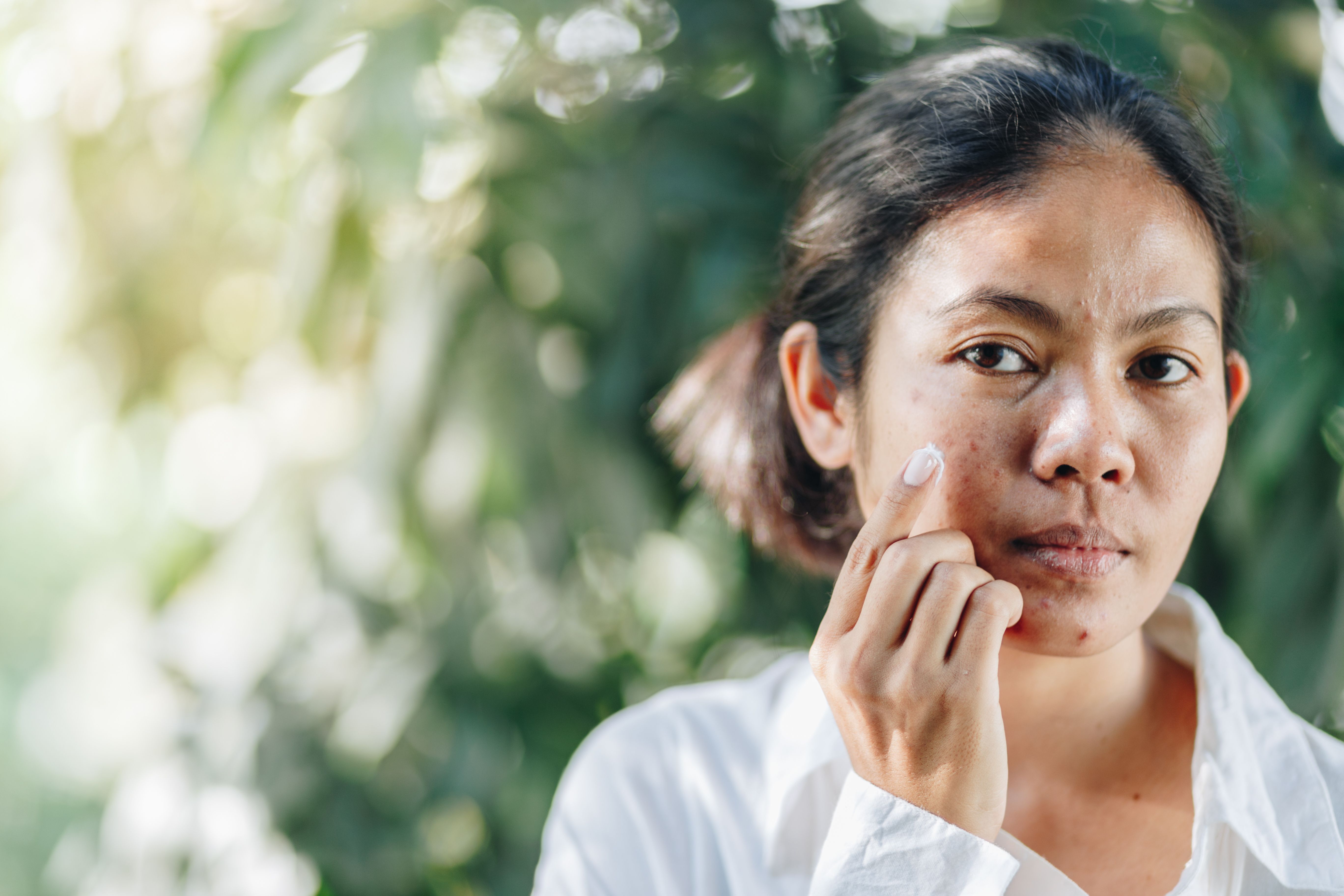- Case-Based Roundtable
- General Dermatology
- Eczema
- Chronic Hand Eczema
- Alopecia
- Aesthetics
- Vitiligo
- COVID-19
- Actinic Keratosis
- Precision Medicine and Biologics
- Rare Disease
- Wound Care
- Rosacea
- Psoriasis
- Psoriatic Arthritis
- Atopic Dermatitis
- Melasma
- NP and PA
- Skin Cancer
- Hidradenitis Suppurativa
- Drug Watch
- Pigmentary Disorders
- Acne
- Pediatric Dermatology
- Practice Management
- Prurigo Nodularis
- Buy-and-Bill
Publication
Article
Dermatology Times
Novel Triple-Combination Acne Treatment Shows Early, Significant Results
Author(s):
Investigators explore the effectiveness of new combination therapies to address the multifactorial pathophysiology of acne vulgaris.
Acne vulgaris benefits from a robust armamentarium, with a wave of new options coming to market every year. Treatment options range from topical and oral antimicrobials and topical and systemic retinoids to benzoyl peroxide and oral contraceptives. Although some have shown efficacy as monotherapy, the improved outcomes from their combined use continues to drive innovative treatment options.
Combination therapy offers opportunities to address the multifactorial pathophysiology of acne, which includes abnormal keratinization, increased sebum production, follicular proliferation of bacteria, and inflammation. Pairing topical treatments that target different aspects of the condition may improve the overall efficacy of treatment, according to findings from a recent study.1
This not only enables a more customized approach to combatting multiple causal factors with 1 treatment, it also simplifies treatment regimens for patients.2 In fact, data demonstrate that patient adherence improves with combination agents.3 This is important because poor adherence contributes to the chronicity and morbidity associated with acne.
The Power of 3
Investigators are evaluating a new triple-combination acne treatment––a formulation of clindamycin phosphate, benzoyl peroxide, and adapalene––that could provide greater efficacy and tolerability than a single or double-combination agent. This triple combination also has the potential to improve patient adherence and reduce the potential for antibiotic resistance.
In a phase 2, double-blind, multicenter, randomized, 12-week study, investigators randomly assigned eligible participants aged 9 years and older with moderate to severe acne to once-daily triple- combination treatment, vehicle, or 1 of 3 dual-component topical acne gels. At week 12, 52.5% of participants achieved treatment success with the triple combination vs the vehicle (8.1%) and dual combinations. The triple-combination drug also provided significantly greater absolute reductions in inflammatory and noninflammatory lesions compared with the vehicle and dual combinations. This corresponded to greater than 70% reductions in both inflammatory and comedonal lesions with the triple combination.4
The study drug was well tolerated, with most treatment-emergent adverse events being of mild to moderate severity. “With this triple combination, we saw improvement that was greater than expected,” said lead study author Linda Stein Gold, MD, director of dermatology clinical research and division head of dermatology at Henry Ford Health in Detroit, Michigan. Regarding which factors pointed to the potential of combining these agents into a triple treatment, Stein Gold remarked, “With most of the other fixed combinations for acne, the combination has improved efficacy compared with the individual ingredients but the improvement is often just slightly greater.”
“What is unique about the triple combination is that each of the individual ingredients had equal contribution to the final efficacy. The final efficacy appears to show a synergistic effect.”
Altogether, the combination of these 3 acne treatments targets 3 of the 4 acne pathogenic pathways involved in the condition.
Antibiotic resistance is always a concern with antibiotic acne treatment, given its frequent use. “The risk of antibiotic resistance is minimized with the addition of the benzoyl peroxide to the combination,” said Stein Gold. In the phase 2 study mentioned above, the triple combination was fast acting, with significant results seen as early as week 2. It will be exciting to see further studies using the triple-combination acne treatment, Stein Gold added.
References
1. Kircik LH. Synergy and its clinical reievance in topical acne therapy. J Clin Aesthet Dermatol. 2011;4(11):30-33.
2. Knutsen-Larson S, Dawson AL, Dunnick CA, Dellavalle RP. Acne vulgaris: pathogenesis, treatment, and needs assessment. Dermatol Clin. 2012;30(1):99-106, viii-ix. doi:10.1016/j.det.2011.09.001
3. Yentzer BA, Ade RA, Fountain JM, et al. Simplifying regimens promotes greater adherence and outcomes with topical acne medications: a randomized controlled trial. Cutis. 2010;86(2):103-108.
4. Stein Gold L, Baldwin H, Kircik LH, et al. Efficacy and safety of a fixed-dose clindamycin phosphate 1.2%, benzoyl peroxide 3.1%, and adapalene 0.15% gel for moderate-to-severe acne: a randomized phase II study of the first triple-combination drug. Am J Clin Dermatol. 2022;23(1):93-104. doi:10.1007/s40257-021-00650-3





